********** ENTERTAINMENT **********
return to top
The 25 Best Movies on Apple TV+ Right Now (February 2025)
Thu, 13 Feb 2025 20:00:00 +0000
Fly Me to the Moon, The Gorge, and Blitz are just a few of the movies you should be watching on Apple TV+ this month.
Match ID: 0 Score: 47.14 source: www.wired.com age: 3 days
qualifiers: 30.00 (best|good|great) (show|movie), 17.14 movie
The 25 Best Shows on Amazon Prime Right Now (February 2025)
Sat, 15 Feb 2025 12:00:00 +0000
Invincible, The Rig, and Fallout are just a few of the shows you should be watching on Amazon Prime Video this week.
Match ID: 1 Score: 35.00 source: www.wired.com age: 1 day
qualifiers: 35.00 (best|good|great) (show|movie)
Baftas 2025: Mikey Madison gets her star-is-born moment and classy Conclave wins big | Peter Bradshaw
Sun, 16 Feb 2025 21:05:22 GMT
The Brutalist was the night’s almost-joint winner, with prizes for director Brady Corbet and Adrien Brody, while A Real Pain and Kneecap provided heartening victories
• Conclave beats The Brutalist to best picture
• Full list of winners
• Adrien Brody and Mikey Madison among the winners – in pictures
• Best quotes of the night
Whatever else happened at this year’s Bafta ceremony, it provided us with a very exciting star-is-born moment. Mikey Madison broke ahead of a densely packed crowd of best-actress contenders (in which only the hapless Karla Sofía Gascón was really lagging behind) to win the Bafta for her wonderfully smart, funny, charismatic and vulnerable performance in Sean Baker’s Anora, playing a New York table dancer who gets a Vegas wedding to a Russian oligarch’s son. Her final closeup scene in that film is a thrilling masterclass in complexity. I admit that I myself had been rooting for Marianne Jean-Baptiste for her performance in Mike Leigh’s Hard Truths, but who could possibly begrudge Madison her night of triumph?
Otherwise, the night’s big winner was Edward Berger’s superbly classy and sleek Vatican conspiracy drama Conclave, based on the Robert Harris bestseller; it was level pegging in terms of numbers with The Brutalist, but carried off the evening’s top prize. Conclave is the movie whose blue-chip excellence all round made it a firm favourite with Bafta voters, who were thrilled by Ralph Fiennes’s lead performance as the troubled cardinal; they were diverted by its visual flourishes, amused by its intelligent but approachable dialogue on religious issues and vastly entertained by its twist ending. Strict anti-spoiler rules dictate that we can’t fully discuss how this film in fact is part of a contemporary debate exhaustively analysed elsewhere.
Continue reading...Both Edward Berger and Brady Corbet’s dramas take four awards while Demi Moore denied comeback prize as competition heats up for next month’s Oscars
Conclave, Edward Berger’s Vatican-set thriller starring Ralph Fiennes as a cardinal overseeing the election of a new pope, went into this year’s Bafta ceremony with a dozen nominations – the most of any contender. It ended up with four awards: for best picture, outstanding British film, adapted screenplay and editing.
Accepting the second of those, Berger – who swept the board at the awards two years ago with his remake of All Quiet on the Western Front, which won seven prizes – said: “We live in a time of a crisis of democracy. Institutions used to bringing us together are used to pull us apart. Sometimes it’s hard to keep the faith, and that’s why we make movies.”
Continue reading...
Non-fungible tokens (NFTs) are the most popular digital assets today, capturing the attention of cryptocurrency investors, whales and people from around the world. People find it amazing that some users spend thousands or millions of dollars on a single NFT-based image of a monkey or other token, but you can simply take a screenshot for free. So here we share some freuently asked question about NFTs.
NFT stands for non-fungible token, which is a cryptographic token on a blockchain with unique identification codes that distinguish it from other tokens. NFTs are unique and not interchangeable, which means no two NFTs are the same. NFTs can be a unique artwork, GIF, Images, videos, Audio album. in-game items, collectibles etc.
A blockchain is a distributed digital ledger that allows for the secure storage of data. By recording any kind of information—such as bank account transactions, the ownership of Non-Fungible Tokens (NFTs), or Decentralized Finance (DeFi) smart contracts—in one place, and distributing it to many different computers, blockchains ensure that data can’t be manipulated without everyone in the system being aware.
The value of an NFT comes from its ability to be traded freely and securely on the blockchain, which is not possible with other current digital ownership solutionsThe NFT points to its location on the blockchain, but doesn’t necessarily contain the digital property. For example, if you replace one bitcoin with another, you will still have the same thing. If you buy a non-fungible item, such as a movie ticket, it is impossible to replace it with any other movie ticket because each ticket is unique to a specific time and place.
One of the unique characteristics of non-fungible tokens (NFTs) is that they can be tokenised to create a digital certificate of ownership that can be bought, sold and traded on the blockchain.
As with crypto-currency, records of who owns what are stored on a ledger that is maintained by thousands of computers around the world. These records can’t be forged because the whole system operates on an open-source network.
NFTs also contain smart contracts—small computer programs that run on the blockchain—that give the artist, for example, a cut of any future sale of the token.
Non-fungible tokens (NFTs) aren't cryptocurrencies, but they do use blockchain technology. Many NFTs are based on Ethereum, where the blockchain serves as a ledger for all the transactions related to said NFT and the properties it represents.5) How to make an NFT?
Anyone can create an NFT. All you need is a digital wallet, some ethereum tokens and a connection to an NFT marketplace where you’ll be able to upload and sell your creations
When you purchase a stock in NFT, that purchase is recorded on the blockchain—the bitcoin ledger of transactions—and that entry acts as your proof of ownership.
The value of an NFT varies a lot based on the digital asset up for grabs. People use NFTs to trade and sell digital art, so when creating an NFT, you should consider the popularity of your digital artwork along with historical statistics.
In the year 2021, a digital artist called Pak created an artwork called The Merge. It was sold on the Nifty Gateway NFT market for $91.8 million.
Non-fungible tokens can be used in investment opportunities. One can purchase an NFT and resell it at a profit. Certain NFT marketplaces let sellers of NFTs keep a percentage of the profits from sales of the assets they create.
Many people want to buy NFTs because it lets them support the arts and own something cool from their favorite musicians, brands, and celebrities. NFTs also give artists an opportunity to program in continual royalties if someone buys their work. Galleries see this as a way to reach new buyers interested in art.
There are many places to buy digital assets, like opensea and their policies vary. On top shot, for instance, you sign up for a waitlist that can be thousands of people long. When a digital asset goes on sale, you are occasionally chosen to purchase it.
To mint an NFT token, you must pay some amount of gas fee to process the transaction on the Etherum blockchain, but you can mint your NFT on a different blockchain called Polygon to avoid paying gas fees. This option is available on OpenSea and this simply denotes that your NFT will only be able to trade using Polygon's blockchain and not Etherum's blockchain. Mintable allows you to mint NFTs for free without paying any gas fees.
The answer is no. Non-Fungible Tokens are minted on the blockchain using cryptocurrencies such as Etherum, Solana, Polygon, and so on. Once a Non-Fungible Token is minted, the transaction is recorded on the blockchain and the contract or license is awarded to whoever has that Non-Fungible Token in their wallet.
You can sell your work and creations by attaching a license to it on the blockchain, where its ownership can be transferred. This lets you get exposure without losing full ownership of your work. Some of the most successful projects include Cryptopunks, Bored Ape Yatch Club NFTs, SandBox, World of Women and so on. These NFT projects have gained popularity globally and are owned by celebrities and other successful entrepreneurs. Owning one of these NFTs gives you an automatic ticket to exclusive business meetings and life-changing connections.
That’s a wrap. Hope you guys found this article enlightening. I just answer some question with my limited knowledge about NFTs. If you have any questions or suggestions, feel free to drop them in the comment section below. Also I have a question for you, Is bitcoin an NFTs? let me know in The comment section below
The former fishing village on the Ligurian coast was once a favourite with the wealthy British set. Now instead of tennis and tea parties, it offers scenic treks and seafood feasts in glorious spring sunshine
‘Why don’t the inglesi come here any more?” The question was asked by a customer at Caffè Roma in the seaside town of Alassio, whose pre-second world war British population could reach 5,000.
There are several reasons, I think. From the late 19th century, wealthy Britons would arrive in October to escape the winter cold, stay until May, and then head home before the torrid Italian summer. These days, British people with that kind of wealth probably winter between Zermatt and the Caribbean. But neither has Alassio great appeal to more ordinary Britons wanting a summer holiday: August temperatures can hit the high 30s, crowds and prices surge and, as in so many Italian resorts, the sands are taken over by beach concessions from Easter to September.
Continue reading...Makeshift hospitals and informal settlements deal with daily influx of those escaping the war in neighbouring Sudan
At the Joda border crossing between Sudan and South Sudan, movement is constant. Just 100 metres separate the two border checkpoints – on the Sudanese side, three raised flags welcome newcomers; on the South Sudanese side, a sign in Arabic and English marks the entrance to the country.
Women arrive carrying their children, with their belongings balanced on their heads. Some families bring bed frames, nightstands, food, chairs and suitcases, loading them on to carts pulled by donkeys and crossing into South Sudan to escape war in Sudan.
The entry point for refugees from Sudan to South Sudan; in the background is the border. In December, more than 5,000 people crossed this point each day
Continue reading...Positions cut also appeared to focus on agency’s centers for tobacco products, including oversight of e-cigarettes
The Trump administration’s effort to slash the size of the federal workforce reached the Food and Drug Administration this weekend, as recently hired employees who review the safety of food ingredients, medical devices and other products were fired.
Probationary employees across the FDA received notices on Saturday evening that their jobs were being eliminated, according to three FDA staffers who spoke to the Associated Press on condition of anonymity because they were not authorized to speak publicly.
Continue reading...Readers respond to Adrian Chiles’s experience of the institution’s treasures
I would guess that Adrian Chiles is no fan of The Great Pottery Throw Down, currently on Channel 4 (At 57, I went to the British Museum for the first time – and it left me rather cold, 12 February). Not only is he missing out on a lovely creative piece of television, but he is failing to recognise that pots, jugs, vessels, dishes and containers of all shapes and sizes have played a vital part in the development of civilisation over the ages.
Pots for carrying, storing and dispensing water, wine, oil, foodstuff and human waste are important historical markers of human ingenuity and skill that we should not dismiss. While the use of terracotta, ceramics, bone china etc for functional items in our lives has been usurped by plastic and metal, the artistic merits of pots and their intricate illustrations is something to be celebrated. Maybe Mr Chiles needs to sign up for a pottery class.
Jan Ross
Silverton, Devon
Everyone hopes that they will get happier and wiser as well as older. And you know what? Sometimes they do
I met my younger self for coffee. She wore a crisp white Agnès B shirt and patent ballet pumps; I wore H&M elastic waisted trousers and the T-shirt I wore to the gym the day before. She ordered … hang on, hang on. First, isn’t this a time-travel no-no? And if it’s OK, I have questions. Say I met my 20-year-old self – is it 1995, meaning weak filter in the hippy cafe with cakes that taste like horse food? Or 2025, when every second shop serves violently acidic espressos? (Either way, I need to prepare my stomach.) And how have I lured her out? Because she may be naive, but no way would she agree to coffee with “your future self”. That’s plainly a trap.
This whimsy, you may not be surprised to hear, is a TikTok trend. Based on a poem by Jennae Cecelia, it has been enthusiastically adopted by the youth (how are you dewy-faced babies meeting your younger selves – what are they, foetuses?). The formulaic videos are set to the kind of acoustic crooning that makes my husband instantly switch the radio to Capital Dance and wow, are they earnest about their lost, hurting youthful selves and self-actualised current incarnations. Aren’t gen Z supposed to be jokey nihilists? “We hugged and I told her I am becoming everything she had ever wanted me to be,” goes TikToker @earthtoapryl’s version (2m views). “I told her she’s full of purpose and has taught 10 million people to love themselves,” says another, and if you aren’t cringing your entire body inside out reading that, you’re probably not a gen X cynic.
Continue reading...The UK imports more than £1bn worth of the Italian staple a year, but now sales are taking off for makers in Yorkshire, Cumbria and beyond
Nutty, chewy and with a chestnut-brown hue, it’s a far cry from the pasta you may be used to serving with your bolognese. But the Northern Pasta Co’s products, from rigatoni to fusilli, are part of a growing wave of the Italian staple being made in the UK.
The Cumbria-based company’s sales increased 357% in the year to February 2024, and from the spring its products will be sold on Ocado. Similarly, the Yorkshire Pasta Company, founded in 2019, is now stocked at more than 600 shops. Cornwall Pasta Co makes flavoured pastas, while Riverford sells pasta made by the Fresh Flour Company in Devon.
Continue reading...Whose tortelloni are pillows of pasta perfection, and whose taste like postage stamps? Our quick-cook columnist has the answers …
• The best food processors and mixers – chosen by chefs
Shop-bought ravioli and tortelloni are staples in my kitchen – I’ve even been known (with some chutzpah) to serve bowls of the stuff to friends, including well-known food writers, albeit improved with brown butter, crisp sage and hazelnuts, or in my signature ravioli lasagne.
In an ideal packet, I’m looking for a well-seasoned filling, nice and light from the ricotta, and not too processed or stodgy in texture. Similarly, the pasta shouldn’t taste plasticky; the closer it is to homemade, the better.
Continue reading...Trend towards more extreme-weather events will continue to hit crop yields and create price spikes, Inverto says
Extreme weather events are expected to lead to volatile food prices throughout 2025, supply chain analysts have said, after cocoa and coffee prices more than doubled over the past year.
In an apparent confirmation of warnings that climate breakdown could lead to food shortages, research by the consultancy Inverto found steep rises in the prices of a number of food commodities in the year to January that correlated with unexpected weather.
Continue reading...A weekly email from Yotam Ottolenghi, Meera Sodha, Felicity Cloake and Rachel Roddy, featuring the latest recipes and seasonal eating ideas
Each week we’ll send you an exclusive newsletter from our star food writers. We’ll also send you the latest recipes from Yotam Ottolenghi, Nigel Slater, Meera Sodha and all our star cooks, stand-out food features and seasonal eating inspiration, plus restaurant reviews from Grace Dent and Jay Rayner.
Sign up below to start receiving the best of our culinary journalism in one mouth-watering weekly email.
Continue reading...Palestinians from Gaza responded with outrage to Trump’s proposal to expel them from their homes.
The post “You Don’t Own Gaza, Donald Trump”: Palestinians Vow to Remain and Rebuild appeared first on The Intercept.
In South Africa, a 36-year-old living with HIV since childhood fears she will lose access to treatment due to Trump’s policy.
The post Global HIV Care Thrown Into Chaos by Trump: “I Will Be Sick and Maybe Die” appeared first on The Intercept.
After plunging USAID and its network of contractors into chaos, communications breakdowns and bureaucratic snafus leave projects stalled.
The post Marco Rubio’s USAID “Humanitarian Waiver” Isn’t Helping Restart Lifesaving Programs appeared first on The Intercept.
Style, with substance: what’s really trending this week, a roundup of the best fashion journalism and your wardrobe dilemmas solved, direct to your inbox every Thursday
Style, with substance: what’s really trending this week, a roundup of the best fashion journalism and your wardrobe dilemmas solved, delivered straight to your inbox every Thursday
Explore all our newsletters: whether you love film, football, fashion or food, we’ve got something for you
Continue reading...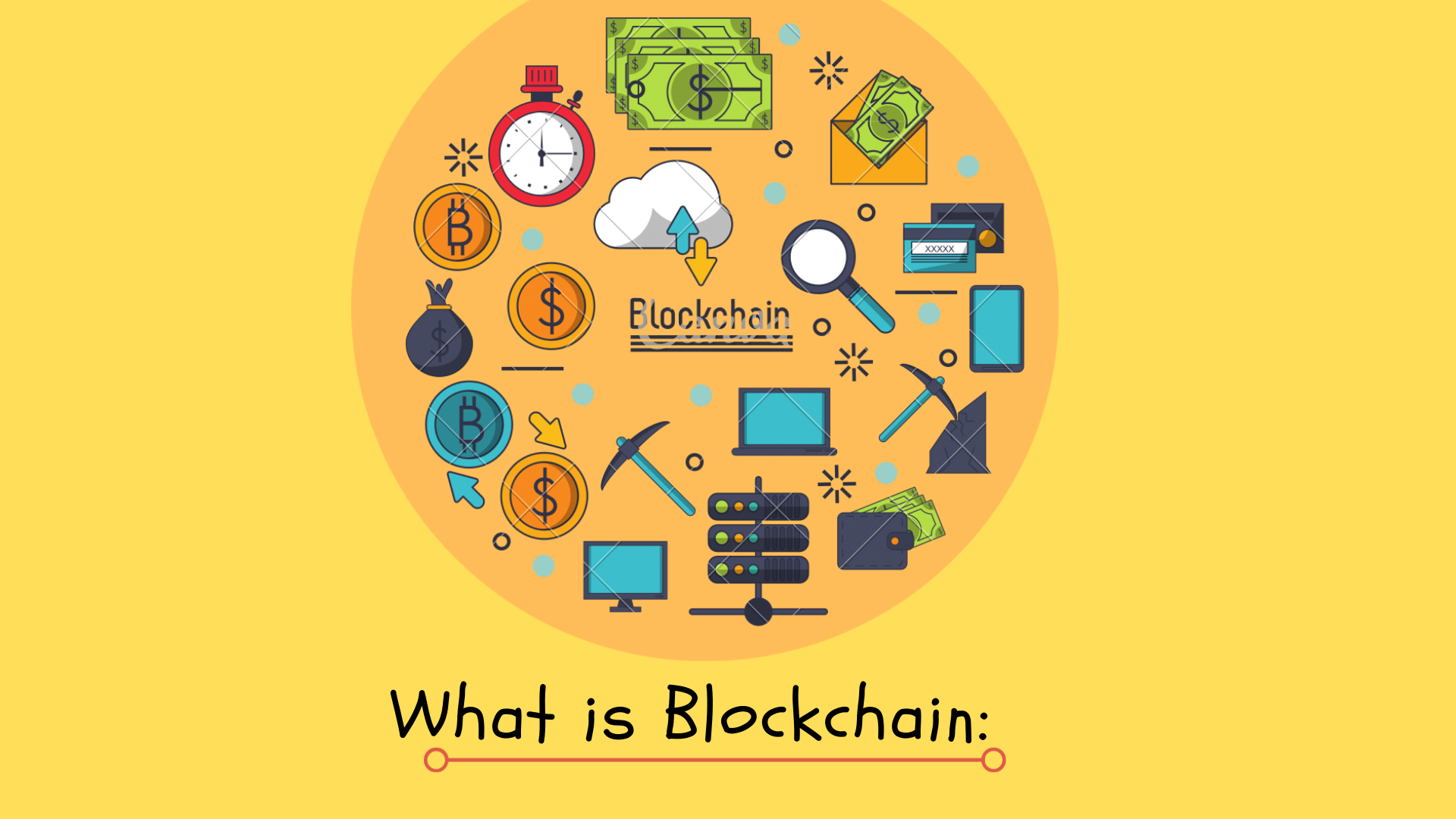 |
Imagine a world in which you can do transactions and many other things without having to give your personal information. A world in which you don’t need to rely on banks or governments anymore. Sounds amazing, right? That’s exactly what blockchain technology allows us to do.
It’s like your computer’s hard drive. blockchain is a technology that lets you store data in digital blocks, which are connected together like links in a chain.
Blockchain technology was originally invented in 1991 by two mathematicians, Stuart Haber and W. Scot Stornetta. They first proposed the system to ensure that timestamps could not be tampered with.
A few years later, in 1998, software developer Nick Szabo proposed using a similar kind of technology to secure a digital payments system he called “Bit Gold.” However, this innovation was not adopted until Satoshi Nakamoto claimed to have invented the first Blockchain and Bitcoin.
A blockchain is a distributed database shared between the nodes of a computer network. It saves information in digital format. Many people first heard of blockchain technology when they started to look up information about bitcoin.
Blockchain is used in cryptocurrency systems to ensure secure, decentralized records of transactions.
Blockchain allowed people to guarantee the fidelity and security of a record of data without the need for a third party to ensure accuracy.
To understand how a blockchain works, Consider these basic steps:
Let’s get to know more about the blockchain.
Blockchain records digital information and distributes it across the network without changing it. The information is distributed among many users and stored in an immutable, permanent ledger that can't be changed or destroyed. That's why blockchain is also called "Distributed Ledger Technology" or DLT.
Here’s how it works:
And that’s the beauty of it! The process may seem complicated, but it’s done in minutes with modern technology. And because technology is advancing rapidly, I expect things to move even more quickly than ever.
Even though blockchain is integral to cryptocurrency, it has other applications. For example, blockchain can be used for storing reliable data about transactions. Many people confuse blockchain with cryptocurrencies like bitcoin and ethereum.
Blockchain already being adopted by some big-name companies, such as Walmart, AIG, Siemens, Pfizer, and Unilever. For example, IBM's Food Trust uses blockchain to track food's journey before reaching its final destination.
Although some of you may consider this practice excessive, food suppliers and manufacturers adhere to the policy of tracing their products because bacteria such as E. coli and Salmonella have been found in packaged foods. In addition, there have been isolated cases where dangerous allergens such as peanuts have accidentally been introduced into certain products.
Tracing and identifying the sources of an outbreak is a challenging task that can take months or years. Thanks to the Blockchain, however, companies now know exactly where their food has been—so they can trace its location and prevent future outbreaks.
Blockchain technology allows systems to react much faster in the event of a hazard. It also has many other uses in the modern world.
Blockchain technology is safe, even if it’s public. People can access the technology using an internet connection.
Have you ever been in a situation where you had all your data stored at one place and that one secure place got compromised? Wouldn't it be great if there was a way to prevent your data from leaking out even when the security of your storage systems is compromised?
Blockchain technology provides a way of avoiding this situation by using multiple computers at different locations to store information about transactions. If one computer experiences problems with a transaction, it will not affect the other nodes.
Instead, other nodes will use the correct information to cross-reference your incorrect node. This is called “Decentralization,” meaning all the information is stored in multiple places.
Blockchain guarantees your data's authenticity—not just its accuracy, but also its irreversibility. It can also be used to store data that are difficult to register, like legal contracts, state identifications, or a company's product inventory.
Blockchain has many advantages and disadvantages.
I’ll answer the most frequently asked questions about blockchain in this section.
Blockchain is not a cryptocurrency but a technology that makes cryptocurrencies possible. It's a digital ledger that records every transaction seamlessly.
Yes, blockchain can be theoretically hacked, but it is a complicated task to be achieved. A network of users constantly reviews it, which makes hacking the blockchain difficult.
Coinbase Global is currently the biggest blockchain company in the world. The company runs a commendable infrastructure, services, and technology for the digital currency economy.
Blockchain is a decentralized technology. It’s a chain of distributed ledgers connected with nodes. Each node can be any electronic device. Thus, one owns blockhain.
Bitcoin is a cryptocurrency, which is powered by Blockchain technology while Blockchain is a distributed ledger of cryptocurrency
Generally a database is a collection of data which can be stored and organized using a database management system. The people who have access to the database can view or edit the information stored there. The client-server network architecture is used to implement databases. whereas a blockchain is a growing list of records, called blocks, stored in a distributed system. Each block contains a cryptographic hash of the previous block, timestamp and transaction information. Modification of data is not allowed due to the design of the blockchain. The technology allows decentralized control and eliminates risks of data modification by other parties.
Blockchain has a wide spectrum of applications and, over the next 5-10 years, we will likely see it being integrated into all sorts of industries. From finance to healthcare, blockchain could revolutionize the way we store and share data. Although there is some hesitation to adopt blockchain systems right now, that won't be the case in 2022-2023 (and even less so in 2026). Once people become more comfortable with the technology and understand how it can work for them, owners, CEOs and entrepreneurs alike will be quick to leverage blockchain technology for their own gain. Hope you like this article if you have any question let me know in the comments section
FOLLOW US ON TWITTER
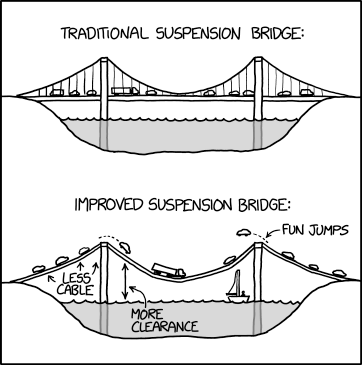
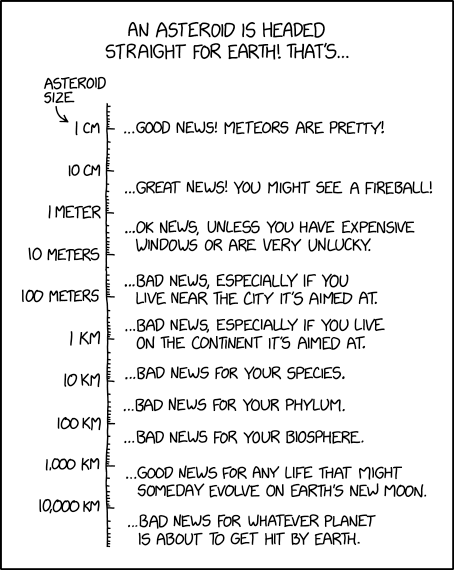
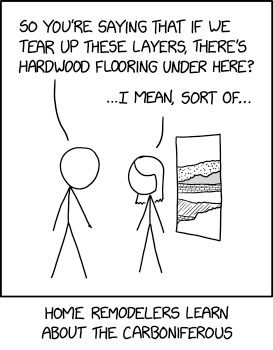
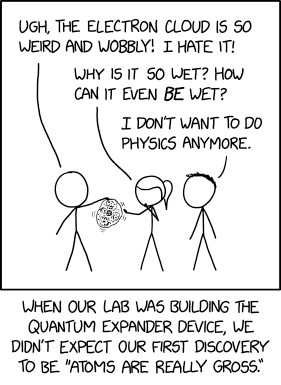
For some members of the WhatsApp group, speaking out for Palestine and criticizing Israel are tantamount to supporting Hamas.
The post The Columbia Network Pushing Behind the Scenes to Deport and Arrest Student Protesters appeared first on The Intercept.
Betar U.S. said it has shared with the Trump administration a list of the “names of hundreds of terror supporters.”
The post The Far-Right Group Building a List of Pro-Palestine Activists to Deport appeared first on The Intercept.
RSS Rabbit links users to publicly available RSS entries.
Vet every link before clicking! The creators accept no responsibility for the contents of these entries.
Relevant
Fresh
Convenient
Agile
We're not prepared to take user feedback yet. Check back soon!